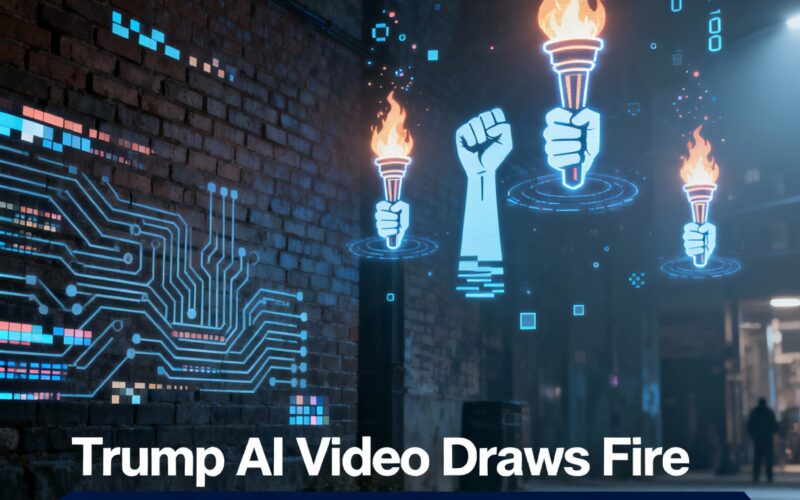The newly viral Trump AI video has ignited controversy after depicting President Donald Trump piloting a “King Trump” jet and dropping brown liquid on protesters. The footage, shared on Trump’s Truth Social account Saturday night, came hours after nationwide “No Kings” demonstrations challenging his leadership and political agenda. The 19-second AI-generated clip has provoked uproar across social and political circles in the United States.
The Trump AI video portrays a crown-wearing Trump maneuvering through a digital Times Square in a military jet. As the song Danger Zone plays in the background, the aircraft releases brown sludge onto protestors waving signs that read “No Kings.” Supporters applauded the video’s humor, but critics condemned it as offensive and “undignified” for a sitting president.
The video followed massive “No Kings” protests held in nearly 2,700 U.S. cities, drawing close to seven million participants. Organized by civil rights groups, the rallies denounced what activists called Trump’s “authoritarian overreach.” Republicans dismissed the movement as a coordinated political attack, while security forces deployed precautionary measures across several states.
White House aides have refused to comment on the Trump AI video despite mounting criticism from Democrats and civil rights leaders. Advocacy groups labeled the footage as “mocking democracy” and evidence of Trump’s growing use of artificial intelligence to stir division. Protest organizer Emma Gonzalez said, “It’s disturbing that AI is being weaponized by the highest office to ridicule citizens exercising free speech.”
Conversely, Trump allies celebrated the AI portrayal, framing it as satire rather than provocation. Vice President JD Vance reshared similar AI visuals showing Trump placing a golden crown on his head, while lawmakers like Marjorie Taylor Greene praised the post as “digital art” symbolizing strength. The Republican base echoed support, describing it as “humorous defense against political theatrics.”
Experts say the Trump AI video captures the evolving intersection of technology and politics. AI researcher Dr. Nina Gupta explained that generative media blurs distinctions between satire and misinformation. “This is not harmless entertainment,” Gupta warned. “When AI-generated videos come from powerful figures, they can reshape perceptions of reality and intensify polarization.”
The timing of the viral Trump AI video aligned with widening political unrest following the end of the “No Kings” rallies. Demonstrators carried messages like “Save Democracy” and “No Crowns in America,” opposing Trump’s recent executive decisions. Rights groups claim the president’s AI usage trivializes ongoing civic movements while reinforcing authoritarian imagery.
Trump appeared unfazed by the backlash, reposting several fan-made AI montages Sunday morning. One video depicted him seated on a golden throne, waving from the White House balcony, captioned “They call me a king, I call it winning.” His supporters hailed the post as confidence in leadership, while critics cited it as self-parody crossing into propaganda.
Media analysts now warn that incidents like the Trump AI video signal an emerging ethical crisis. As generative AI tools grow widespread, politicians using deepfakes risk influencing public opinion without accountability. Analysts predict the 2026 election cycle will test how AI-manipulated media shapes campaigns, credibility, and truth itself.
For more updates and responsible coverage of AI’s growing role in global politics, visit ainewstoday.org your trusted destination for cutting-edge AI news!





